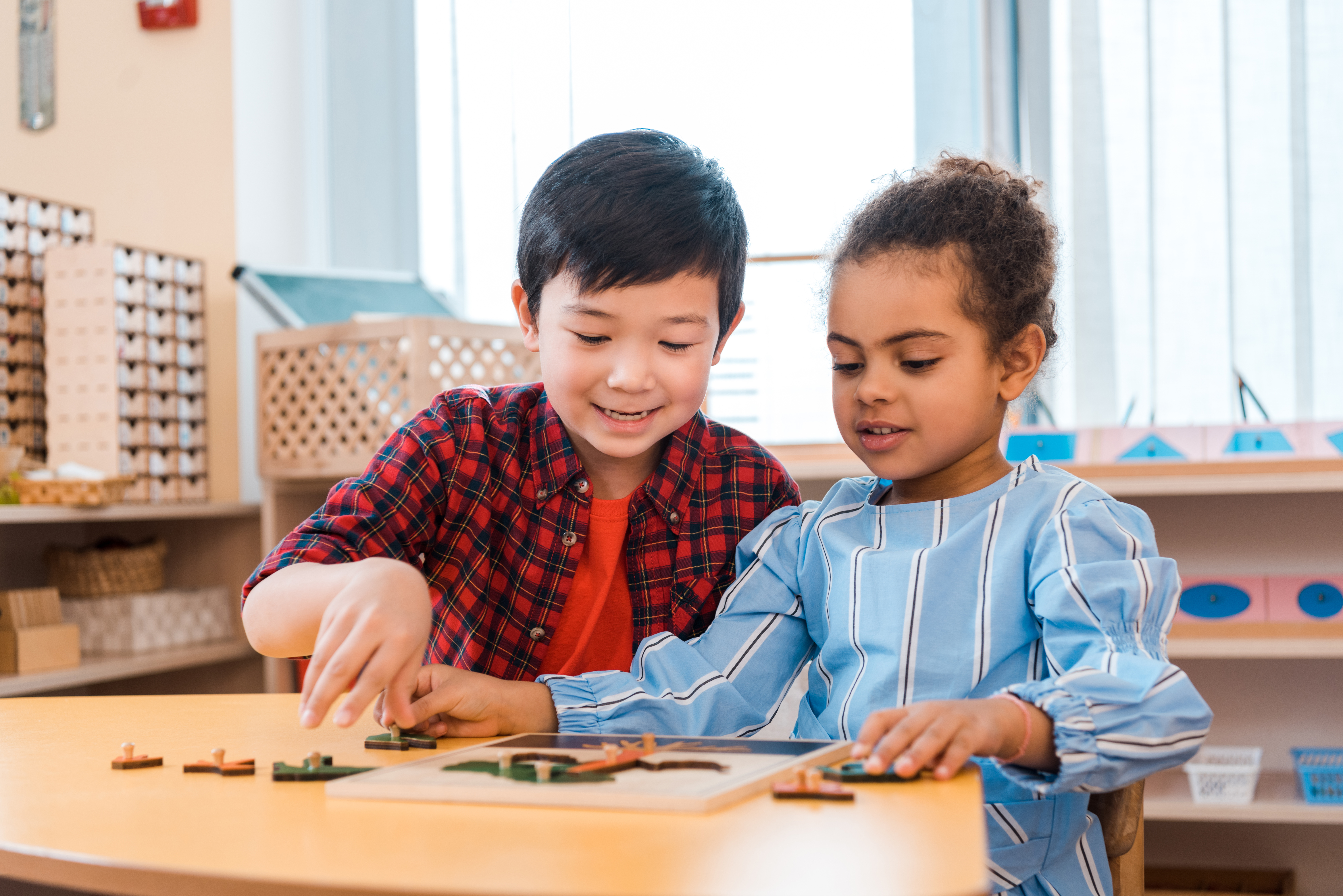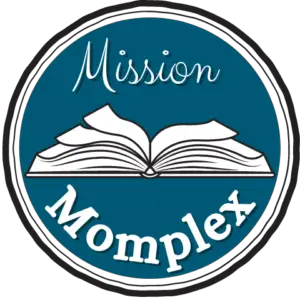Alternative education is experiencing a significant shift as more people understand the risks and benefits of different educational models. It is estimated that more than 650,000 students in the United States participate in some kind of alternative education. Although some loosely define the term, it still impacts how we view traditional school settings.
The pros of Montessori can be increased child independence because kids are allowed to explore within the limits of the classrooms freely. A con is definitely the increased price tag, costing parents more than ten grand a year.
It is helpful to understand some of the pros and cons of Montessori education because these schools are growing in numbers. Because enrollment is steadily increasing, more parents are researching different topics related to each.
There are some things to understand about Montessori education, and I want to provide you with some helpful information as you make decisions for your child.
In this post, I want to break down the pros and cons of Montessori schools. We will discuss them briefly, and I wrote a more in-depth post about this educational model right here. Let’s dive into the pros and cons first!

Summary of Montessori Education
Emphasizing the term “Follow the Child,” Montessori is a child-centered educational model involving student-led learning to deepen understanding of specific, realistic experiences.
Montessori schools often use all-natural tools explicitly created for these schools, which the teachers provide based on their observations. These multi-age classrooms have a higher ratio than most private schools and encourage collaborative work among the different age ranges.
Curriculums are based on traditional school models –english, math, science, history– but are integrated into the community themes instead of being the focal point. Students are often engaged in woodworking, cooking, cleaning, and outdoor community projects to keep it relatable and improve real-life experiences and connections. There is virtually no technology to enhance communication and encourage natural problem-solving.
Pros of Montessori Education
- Hands-on learning
- Child-centered learning
- Independence
- Special-needs
- Multi-age classrooms
- Love for learning
- No homework
Hands-on Environment
These classrooms are very hands-on and sensory-oriented. Students are engaged with specific tools that increase confidence as they master a real-life skill. They navigate through the space and develop their skills based on what they feel comfortable using. Because the teachers are focused on the child, they typically provide appropriate materials for the child as the kids expand their interests and learn coordination. Children also learn to think critically as they work with tools and experiement with projects.
Child-centered Learning
The premise of Montessori education is to “follow the child,” and teachers are trained to create an environment for the children to thrive. According to this study, Montessori students are happier and healthier than others because of its child-focused theme. Holistic learning is a massive benefit to Montessori learning. Many people appreciate the teachers’ respect for the children as they transform environments based on the child’s needs.
Independence
Kids have the freedom to explore within the limits the teachers have created. They have independent thought and become more aware of self-directed learning as they navigate the classrooms. Children build self-esteem and confidence quickly because they are valued and seen as autonomous human beings with unique interests.
Special-needs
Montessori classrooms are great for children with special needs who require customized care and attention. Inclusive schools understand how to create routines, provide appropriate activities, and manage different types of special needs children. According to this website, students who have “physical disabilities, learning problems, ADHD, and autism” are welcome into Montessori schools.
Multi-age Classrooms
Children learn to be extremely social because they work on their own independent ideas but are surrounded by different age levels. Since classrooms vary in age and size, children are encouraged to rely on the support of peers, which enhances the learner’s experience and improves connection and communication. Montessori environments combine social-emotional learning and realistic experiences, creating opportunities for students to practice social skills.
Love for Learning
Maria Montessori wanted to create an environment free from interruption and focused on guiding children into learning. Her calling was to foster independent thought to improve children’s relationships with common tools and household items. Because the kids in these classrooms are allowed to explore freely, they learn to love the learning process and value their journey.
When the mother washes out some linen, or makes some bread and little cakes, the child joins in. Though his action is imitative, it is a selective and intelligent imitation, through which the child prepares himself to play his part in the world.
Maria Montessori
Rarely any Homework
How can this not be a pro! Okay, but seriously, Montessori schools don’t usually implement any kind of homework model because their methods value child-led learning. If they don’t force kids to learn certain things at school, why would they make them learn those subjects at home? This is the whole point! Children want to learn naturally, so Maria Montessori indeed emphasized that with this approach. Teachers may encourage certain activities to build on what they have learned at school, but they will not distribute traditional homework.
Cons of Montessori Education
- Cost
- Loose curriculum model
- Lifestyle change
- Accessibility
- Consistency
- Transitions
- Adult Perceptions
Cost
A pretty massive disadvantage to Montessori is the hefty price tag. These schools range anywhere from $7,000 to $15,000 depending on the age and the time spent (part-time vs. full-time). There are typically a lot of costs in private schools because of fees, trips, and deposits. Administrations believe that the price is the parent’s responsibility as they contemplate alternative schooling methods. Few private schools have no tuition, but many schools have scholarships and sibling discounts to decrease spending and cut down on costs. Payment plans will also spread the tuition and fees over the calendar year.
Loose Curriculum Model
Some view the child-led learning model as a negative because it appears too loose and not strict enough for children. Parents believe their children will not adapt to a free environment and struggle when rules are not strictly enforced, and objectives are loosely defined. Some learners may struggle without enough adult-led structure, and parents are hesitant to enroll their children in a highly child-led environment.
Lifestyle Changes for Parents
When children are enrolled in school, they typically include their family in the fun! Parents and family members must be willing to change their lives to accommodate their children’s interests.
Montessori families understand the methods and teaching strategies which might be hard for some to accept. Parents must understand how their children are being taught because the children will weave their learning into their normal day-to-day behaviors. While I do believe this is the entire point of Montessori education, it is hard for some parents who lack a clear understanding of Montessori values.
Accessibility
While Montessori schools can be hard to locate, the accessibility factor is more of a while-privilege issue. According to this website, it is difficult to get enrolled if you are a person of color. This is clearly a huge negative because not everyone is white. Montessori schools are trying to increase accessibility and offer schools to lower-income neighborhoods. Research also finds that Montessori helps low-income children mainstream, so more schools are popping up in unwealthy communities.
Consistency
Teachers are trained to understand the Montessori methods, and this website takes pride in offering many services to different schools. However, it is a challenge for parents to assess the quality of other Montessori schools because it is not a trademarked name.
It is difficult to sort out different schools and determine which are appropriate for certain children if parents must identify those who align with true Montesorri values. Some educational environments claim to be Montessori without adhering to the guidelines, making some settings inconsistent with others that implement authentic Montessori lessons.
There are some things to learn about authentic Montessori education. It just takes a little reading but can be problematic for those who rush through enrollment processes.
Important Things to Note about Proper Montessori Schools:
- They are trained by AMI Montessori, hold certifications, and stay connected
- Some teachers have taught at an AMI school
- Teachers provide age-appropriate settings for various age groups
- Classrooms are mixed-ages and implement community learning opportunities
- Students go uninterrupted for hours within the boundaries of the classroom
- Children are free to choose their play or workstation
- Teachers understand how to customize environments to the learner
Transitions
Some students may find it challenging to transition to a high school or college after a Montessori school. Few high schools implement Montessori methods; they are smaller in numbers than traditional schools. Given the holistic approach of Montessori, it could be a hard change for a child who is put into a more conventional learning setting after such independence.
Adult Perception
Adults believe some things to be annoying, just based on the untraditional methods that Montessori adheres to. Adults who prefer more compliance, especially in their home life, do not like giving children increased independence as it requires adults to relinquish some level of control over their children.
While these reasons could be a genuine misunderstanding, they are cons nonetheless.
Some adults believe that children lack creativity because it is focused on real-life experiences. Others perceive Montessori schools as too relaxed and think kids never learn basic responsibilities because of the loose curriculum model. If some kids prefer a more structured environment, parents may hesitate when they hear that it is more open-ended than other school curriculums.
Conclusion
While there are definite advantages to Montessori education, it is still helpful to explore the cons to assess whether this decision is for you. Many children benefit from Montessori education and as this model grows, more people will learn what suits their particular learner. Understanding the pros and cons will help you decide whether they apply to you!
Sources
- Association Montessori Internationale | (montessori-ami.org)
- AMI Teacher Training | Association Montessori Internationale (montessori-ami.org)
- Alternative Education: Rigor Redefined – Education Next
- An Association Between Montessori Education in Childhood and Adult Wellbeing – PubMed (nih.gov)
- Exploring the Pros and Cons of Montessori Education | Rasmussen University
- How Montessori education can help low-income students – reimaginED (reimaginedonline.org)
- Montessori vs Waldorf –Similarities, Differences – Mission Momplex
- Montessori, M., The absorbent mind. New York: Holt, Rinehart and Winston, 1976
- Montessori for Children with Special Needs (amshq.org)
- Montessori Resources for Schools, Teachers, Families and Parents | American Montessori Society (amshq.org)
- Montessori, long a favorite for wealthy families, struggles to expand its reach – The Washington Post
